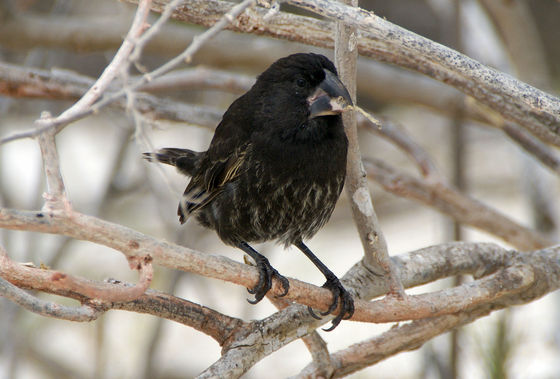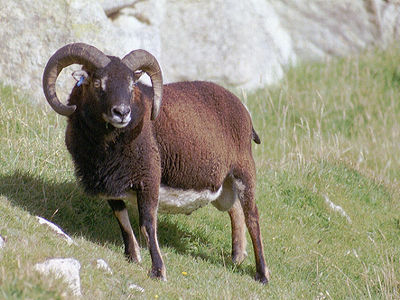Birds "evolved" into new species in just two generations live in the Galapagos Islands

Located just under the equator of the East PacificGalapagos IslandsOn the isolated island, researchers inhabit a bird called "Big Bird". Researchers at Princeton University and Uppsala University conducted a follow-up survey on this big bird for decades and announced the results of the research that "Big Bird evolved into a new species in just two generations" at the science journal Science It is.
Rapid hybrid speciation in Darwin's finches | Science
http://science.sciencemag.org/content/early/2017/11/20/science.aao4593

Galapagos study finds that new species can develop in as little as two generations
https://phys.org/news/2017-11-galapagos-species.html
Researchers Say New Species Are Evolving at an Unbelievable Rate
https://futurism.com/new-species-evolving-unbelievable-rate/
A bird called "Big Bird", which is said to have been born as a new species,Darwin FinchesIt is a small bird that seems to be derived from a species belonging to. Because the Galapagos Islands are land that has never been landed on the continent and fosters its own ecosystem, many of the researchers are trying to figure out how the different kinds of animals living in this land will evolve I am investigating. Mr. Rosemary Grant and Mr. Peter Grant are also researchers who have observed the ecosystem of such Galapagos Islands and they said that they have been observing living things on the island for the past 40 years.
"The novelty of this research is that we can follow up and investigate new species of animals that we were born in the wild.In the study at Daphne Major (the small island of the Galapagos Islands), two so calledCross breedingAnd then we looked at how the new birth occurred, "says Rosemary, Emeritus Professor of Evolutionary Biology.
A new species of birds "Big Bird" found by the Grant couple in the survey

In 1981, one of the graduate students of the university where the Grant couple is a professor noticed the existence of a rooster having a body and a beak larger than the birds inhabiting Daphne Major and singing different songs. From the sample of blood and DNA, this bird inhabits the Espanola Island more than 100 km away from Daphne MajorFinest cactus finIt turned out to be a kind of bird. After that, oo cactus finch which is not good at long distance flight can not return to the island where she lived, so she lives in Daphne MajorGalapagos FinchMating with. As a result, a new kind of "Big Bird" was born.
Galapagos Finch

byputneymark
Finest cactus fin

byputneymark
Researchers have noted that the rapid evolution as observed this time occurred because the reproductive environment was completely isolated and was the result of heterologous crossbreeding of two different species . Until now it was thought that it takes a very long time for new species to be born, but in a unique environment like the Galapagos Islands, new species of creatures are found in a very short time like the Big Bird It shows that there is a possibility of birth and it seems to be an eye-catching case in investigating the evolution of living things.
Related Posts:







